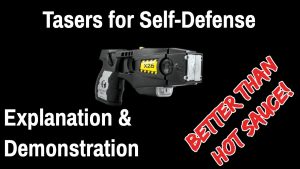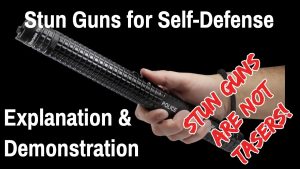
Why I Like the Glock 3.5 Connector and NY1 Trigger Combination
This article is about the different Glock trigger options and Glock Connectors. It also explains why I like the Glock 3.5 connector with the NY1 Trigger. I am not suggesting you would like this set up.
Before you decide to modify your defensive gun please think about ALL the ramifications.
As we talked about in the Glock disassembly videos, the Glock was designed to be easily serviced, and they made several different trigger springs and connectors that work together to change the “feel” of your trigger.
By modifying my Glock 19 with a Glock 3.5 connector and NY1 Trigger I get a trigger that is closer to the double action pull I am used to from learning to shoot using a revolver.
To understand the Glock 3.5 Connector and NY1 Trigger Combination you need to understand how the system works.
First lets discuss the different combinations of Glock triggers and connectors so you understand the different trigger characteristics.
In the connectors you have:
- Competition–3.5lb (or “-“)*
- Standard–5.5lb (2.5kg)
- Heavy–8lb (3.5kg) (or “+”)
In springs you have
- Standard Coil spring (5.5lb with standard connector)
- NY1 (8.5lb with standard connector)
- NY2 (9-11lbs with standard connector)
Here are the combinations in order of weight of trigger pull
Some combinations can actually be so heavy that the gun will not fire.
You can also make the trigger pull to light.
- 3.5 lb pull : 3.5lb connector & standard spring
- 5.5 lb pull : 3.5lb connector & NY 1 spring
- 5.5 lb pull: 5.5lb connector & standard spring
- 6-7 lb pull: 3.5lb connector and NY2 spring
- 8lb connector and standard spring–8 lb pull
- 8.5 lb pull: 5.5lb connector and NY1 spring
- 9-11 lb pull: 5.5lb connector and NY2spring
Per Glock DO NOT USE! 8lb connector with NY1 or NY2 springs
* Glock never actually made a 3.5 pound connector. This is a common error caused by a mathematical error in converting kilograms to pounds. The 3.5 is actually closer to 4.5 but it is normally sold as a 3.5.
Also know that Glock does not sell a factory 3.5 connector to anyone (even armorers). You can get one if it is for a Law Enforcement gun with a request on agency letter head signed by the agency head.
I did manage to snag one from Glock, but most will have to settle for an aftermarket version.
As a matter of policy I am very cautious when modifying my carry guns, and typically stay with stock configurations. However, many of these combinations are actually “factory” configurations.
Why Glock Made the NY Triggers
Glock invented the NY1 and NY2 triggers specifically for certain agencies that wanted an extremely high trigger pull so that they can say any discharge was intentional (this agency also recently missed a suspect and shot 7 innocent bystanders around the bad guy)…
Typically I either use the 5.5 connector with the standard coil for a factory trigger, but recently (after attending the Glock armorer class and speaking with the instructor) I decided to try the “-“ connector with the NY1 spring.
Why I Like the Glock 3.5 Connector and NY1 Trigger Combination
- The NY1 spring is stronger and less prone to breakage (even though this is one part of the gun that may break and the gun still function Fast Forward the video to 2 minute mark)
- The NY1 spring is also designed to make the trigger much more like a double action revolver. It is a completely different design than the standard spring.
- When it is installed, it applies more consistent spring tension on the trigger. This leads to more consistent and less mushy trigger feel.
- The NY1 spring makes the trigger reset is much more positive for faster follow up shots.
- The connector (referred to by Glock as the “-“ or 4.5 connector) just cancels out the weight added by the NY1 Spring.
I understand that Many Hate the NY Triggers
This is one of my most commented on (negatively) videos on YouTube. I get that not everyone thinks like I do. Nor do most people still qualify with department issues double action revolvers.
If you can articulate what you are gaining by the change, and are not trying to lighten the trigger to make up for poor technique, then the 3.5 connector – NY1 trigger is a very worthwhile setup for your Glock. It is what I run, and I do it because I feel it is the best balance of all trigger options, and helps me be more accurate and safe with my pistol.
But remember, it’s not the gun that makes you accurate, it is time on the range and proper mindset and training which makes you more accurate.
As I have said, for idiot lawyer and mall ninja reasons I don’t advocate modifying your handguns – mostly because most aftermarket parts modify the gun from how it was designed, and this can impact reliability. I believe that in a defensive handgun, absolute reliability is the most important aspect, as almost all guns can shoot more accurately than the shooter under stress.
To a degree I also worry about lawyers that don’t understand guns. I know that they are capable making accusations of modifications being done to “make a gun more deadly”. This is a little overstated, but I would hate to see a law abiding citizen use a firearm to protect themselves against a violent criminal and then being convicted.





